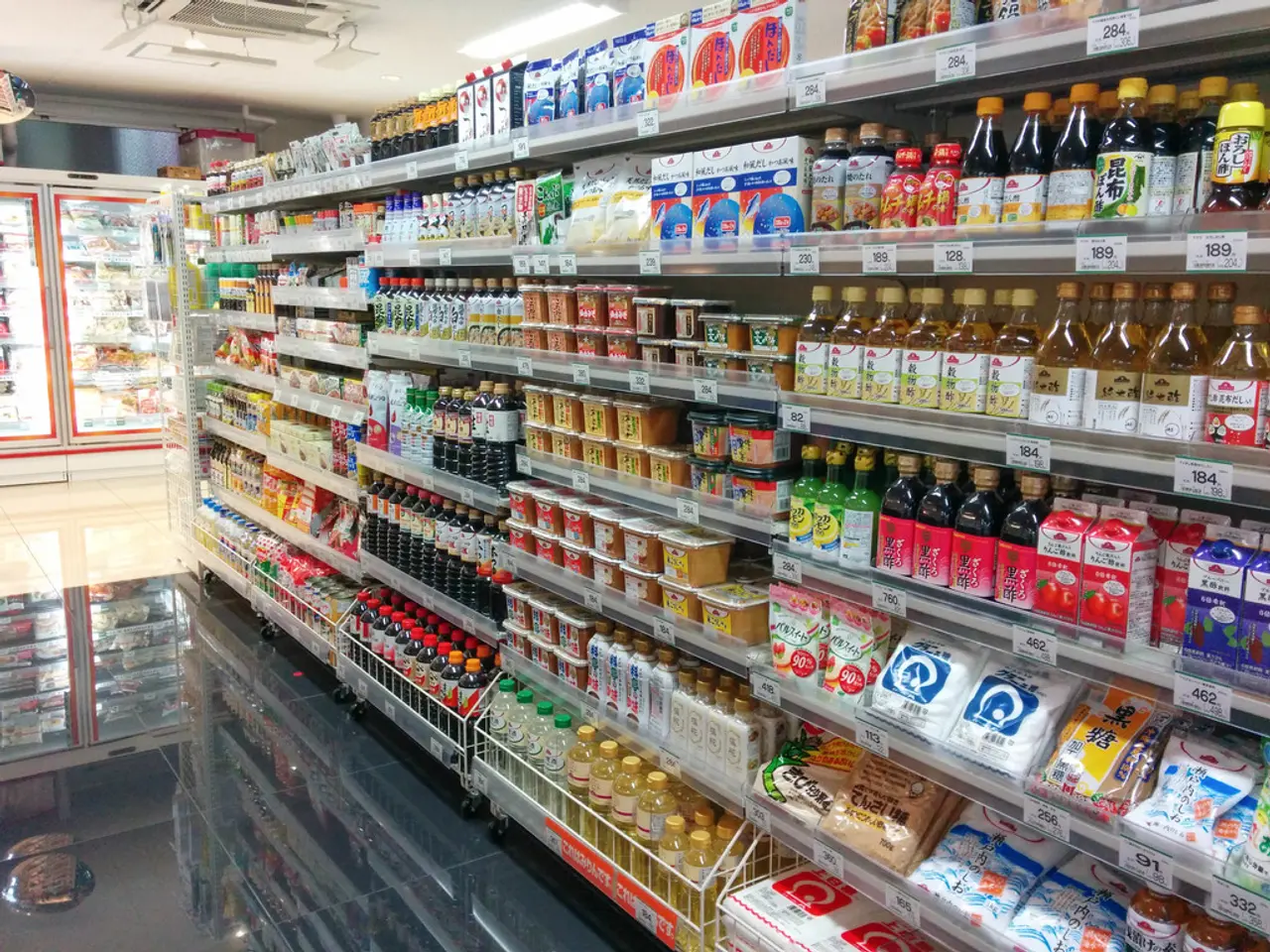Agile Indies Overcome Wary Consumers and operational hindrances
The "2025 Independent Grocers Financial Study" by the National Grocers Association (NGA) and FMS Solutions offers a comprehensive analysis of the financial and operational performance of independent grocers during fiscal year 2024. The study reveals several key challenges and responses that these businesses are currently facing.
One of the major issues highlighted in the report is the increasing store shrink, which refers to losses from theft, spoilage, errors. In fiscal year 2024, total store shrink averaged 3.5% of sales, up from 3.0% the previous year, representing a growing cost burden for independents.
Another significant challenge for independent grocers is the projected cuts to the Supplemental Nutrition Assistance Program (SNAP) eligibility. These cuts are expected to reduce federal SNAP spending by roughly $287-$290 billion over the next decade, resulting in an estimated 6.7% average sales decline for grocers in the short term. Because profit margins for independents are typically very thin (1-2%), even modest sales losses due to fewer SNAP consumers materially depress profitability and operational viability.
Changes in SNAP policy not only reduce sales but also impose additional operational costs, such as employee training and point-of-sale system reprogramming, which strain financial resources further.
Independent grocers also face competitive disadvantage and pricing pressures from national chains. This dynamic challenges independents' ability to maintain margins and invest in store improvements.
Despite these pressures, many independent grocers continue to invest in store remodels and capitalize on their agility. They leverage closer supplier relationships and test new ideas more rapidly than large chains. The NGA's "Fair Markets, Fresh Choices" campaign advocates for regulatory reforms to restore fairness, such as antitrust enforcement and credit card fee reforms, which could alleviate some operational cost pressures.
Grocers are also trying to retain and attract SNAP consumers despite cuts through programs like Double Up Food Bucks (which matches SNAP spending on fresh produce) and medically tailored produce prescriptions. There's a growing emphasis on educating customers about healthier, cost-effective home cooking as a means to maintain loyalty and sales.
The loss of SNAP sales affects the broader economy around independent grocers because every SNAP dollar tends to generate $1.50 in economic activity, supporting jobs both inside and outside the stores.
Independent grocers showed resilience and adaptability in meeting evolving consumer needs amid persistent cost pressures and economic uncertainty. The study incorporates responses from 93 survey participants representing 626 store locations and financial benchmarks from FMS' database of 507 independent grocers with 1,911 store locations.
The study also identifies perimeter bakery as an emerging differentiator, with many independents offering seasonal items, in-store baking, and signature products. Adoption of self-checkout slowed, with just 47% of respondents offering the capability.
E-commerce accounted for 1% of total sales, with an average basket size of $105 online compared to $34 in-store. Operationally, indies were beset with workforce challenges, including part-time associate turnover at 40.7% overall and 55.8% among multi-store operators.
Net profit edged up to 1.9%, led by larger operators. Margins held steady at 27.4%, but total expenses increased to 25.8% of sales. Labor and benefits alone hit a record 16.3% of net sales. Grocery inflation remained moderate during fiscal year 2024. Weekly transactions grew to an average of 8,609 per store as customers hunted for promotions. Inventory turns rose to 17.8, although shrink grew to 3.5%.
The report does not provide information about consumer sentiment early in the year 2025 or any tariff worries, stock market fluctuations, or financial fatigue caused by a long period of inflation. It also does not provide information about grocery inflation during the fiscal year 2025, weekly transactions, spending per trip, or the use of ad circulars, including the increasing shift to digital formats.
In summary, rising shrink and costs combined with declines in SNAP-driven sales are compressing the already thin profit margins of independent grocers, threatening their financial health and operational stability. Nonetheless, independents remain resilient by investing in store improvements, innovating service offerings, and advocating for policy changes to improve competitive conditions.
Finance and technology are crucial for independent grocers as they aim to adapt and compete in the industry. To combat rising costs and declining sales, several have invested in store remodels and self-checkout systems, leveraging technology for operational efficiency. Additionally, they are promoting new programs like Double Up Food Bucks and medically tailored produce prescriptions, utilizing finance and technology to educate customers about healthier, cost-effective home cooking.




